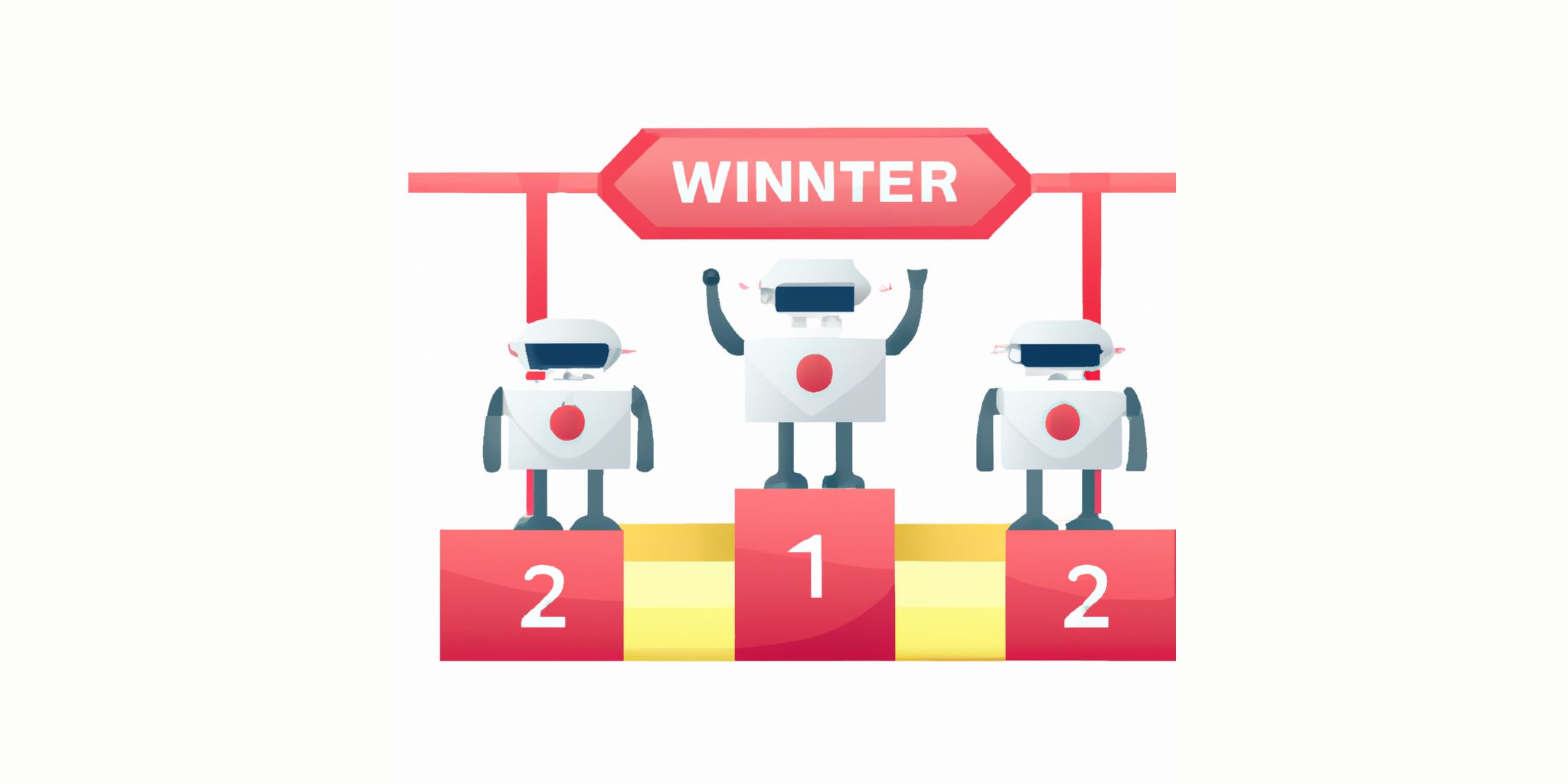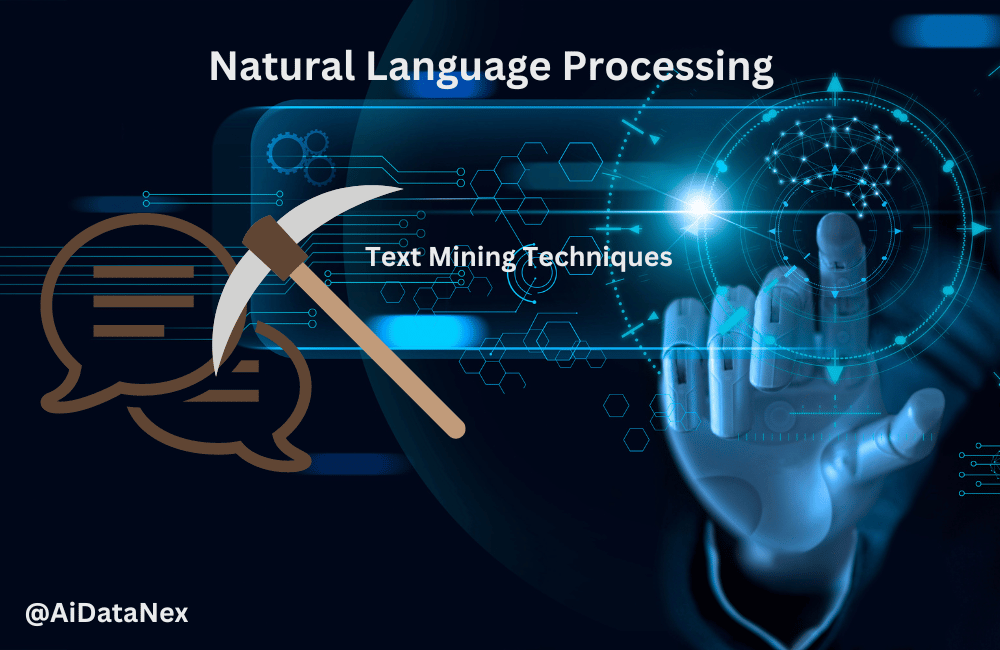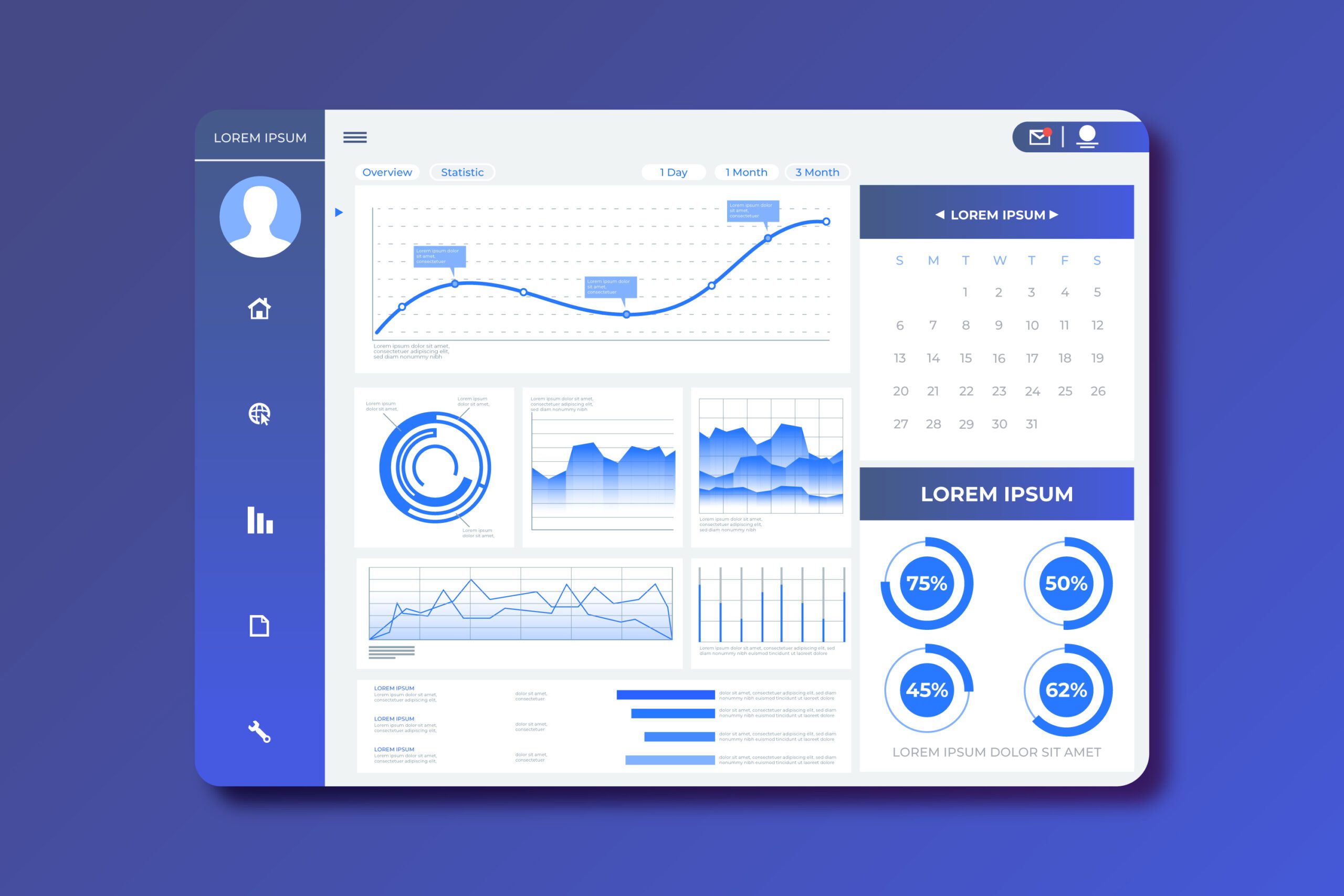Discover how to extract valuable insights from unstructured text data using NLP and text mining. Learn practical applications for business intelligence and research. Elevate your data science skills today!
Text mining and natural language processing (NLP) techniques are essential for modern data analysis. They enable the extraction of meaningful information from vast amounts of unstructured text. Businesses can leverage these methods to enhance decision-making, automate processes, and gain a competitive edge.
Text mining involves parsing and analyzing text to identify patterns, trends, and relationships. NLP techniques help machines understand and interpret human language, making data analysis more efficient. By integrating these tools, companies can uncover hidden insights, predict outcomes, and improve overall performance. Embrace the power of text mining and NLP to stay ahead in a data-driven world.
Introduction To Text Mining
Data analysis is transforming with the advent of text mining and NLP techniques. These methods unlock valuable insights from vast text data. They enable businesses to make better decisions. This section introduces text mining and its pivotal role in data analysis.
What Is Text Mining?
Text mining involves extracting meaningful information from unstructured text data. It uses algorithms to process large volumes of text. This includes documents, social media posts, emails, and more.
Text mining techniques identify patterns and trends. They help in understanding the sentiment, context, and key topics within the text. It is a crucial tool in the era of big data.
Importance In Data Analysis
Text mining plays a vital role in data analysis. It transforms unstructured data into structured data. This structured data is easier to analyze and interpret.
Here are some key benefits:
- Enhanced Decision-Making: Gain insights from customer feedback and social media.
- Trend Analysis: Identify emerging trends and market shifts.
- Improved Customer Experience: Understand customer needs and preferences.
- Competitive Advantage: Stay ahead by monitoring competitor activities and industry news.
Businesses leverage text mining for competitive intelligence, sentiment analysis, and risk management.
The use of Natural Language Processing (NLP) further enhances text mining. NLP techniques help in understanding the human language. They improve the accuracy of text mining results.
Incorporating text mining and NLP in data analysis provides a comprehensive view. It helps in making data-driven decisions swiftly.
| Text Mining Benefits | Description |
|---|---|
| Enhanced Decision-Making | Gain insights from customer feedback and social media. |
| Trend Analysis | Identify emerging trends and market shifts. |
| Improved Customer Experience | Understand customer needs and preferences. |
| Competitive Advantage | Stay ahead by monitoring competitor activities and industry news. |

Credit: aicontentfy.com
Basics Of Nlp
Natural Language Processing (NLP) transforms how computers understand human language. It bridges the gap between human communication and machine comprehension. By leveraging NLP, you can unlock valuable insights from textual data.
Understanding Natural Language Processing
NLP involves teaching computers to interpret and respond to human language. It enables machines to read, understand, and derive meaning from text. NLP applications include chatbots, sentiment analysis, and language translation.
NLP combines linguistics, computer science, and AI. This blend helps computers process natural language efficiently. It powers various applications, making them smarter and more intuitive.
Key Components Of Nlp
Several essential components make NLP effective:
| Component | Description |
|---|---|
| Tokenization | Breaking text into words or phrases. |
| Part-of-Speech Tagging | Identifying the grammatical roles of words. |
| Named Entity Recognition (NER) | Detecting and classifying proper nouns. |
| Sentiment Analysis | Determining the emotional tone of text. |
| Parsing | Analyzing the grammatical structure of sentences. |
Tokenization breaks down text into smaller units like words or phrases. This is the first step in text analysis.
Part-of-Speech Tagging assigns grammatical roles to each word, such as noun or verb.
Named Entity Recognition (NER) identifies and categorizes proper nouns, such as names of people or places.
Sentiment Analysis assesses the emotional tone of the text, indicating positive, negative, or neutral feelings.
Parsing examines the grammatical structure of sentences, helping understand relationships between words.
By mastering these components, you can enhance your data analysis capabilities significantly.
Text Mining Techniques
Text mining techniques unlock valuable insights from vast amounts of data. These methods help extract meaningful patterns, trends, and information. They play a crucial role in various fields, from marketing to healthcare.
Tokenization
Tokenization is the first step in text mining. It involves breaking text into smaller pieces called tokens. Each token can be a word, phrase, or sentence. This process helps in analyzing the structure and meaning of the text.
- Word Tokenization: Splits text into individual words.
- Sentence Tokenization: Splits text into sentences.
- Phrase Tokenization: Splits text into meaningful phrases.
Tokenization simplifies complex text into manageable parts. It makes further analysis more effective and efficient.
Sentiment Analysis
Sentiment analysis determines the emotional tone of the text. It identifies whether the sentiment is positive, negative, or neutral. This technique is vital for understanding customer opinions and feedback.
Sentiment analysis uses algorithms to evaluate the text. These algorithms look for specific words and phrases that indicate emotions.
| Sentiment | Keywords |
|---|---|
| Positive | happy, excellent, good, amazing |
| Negative | sad, terrible, bad, awful |
| Neutral | okay, fine, average, normal |
Businesses use sentiment analysis to gauge customer satisfaction. It helps in improving products and services based on feedback.
:max_bytes(150000):strip_icc()/predictive-analytics.asp-final-fc908743618a4f9093dfdd1fa6e9815a.png)
Credit: www.investopedia.com
Advanced Nlp Methods
Advanced NLP methods transform how we analyze data. They offer powerful techniques to extract valuable insights. Two key methods are Named Entity Recognition and Topic Modeling. These methods enhance the accuracy and depth of data analysis.
Named Entity Recognition
Named Entity Recognition (NER) identifies and classifies entities in text. These entities include names, organizations, locations, dates, and more. NER helps in structuring unstructured text data. It improves data retrieval and organization.
For example, consider the sentence: “Elon Musk founded SpaceX in 2002.” NER identifies “Elon Musk” as a person, “SpaceX” as an organization, and “2002” as a date. This structured data is easy to analyze and use.
Benefits of NER include:
- Improved search accuracy
- Enhanced data categorization
- Better content recommendation
Topic Modeling
Topic Modeling discovers hidden topics within a collection of documents. It helps in understanding the main themes and patterns in large text datasets. LDA (Latent Dirichlet Allocation) is a popular topic modeling technique.
For instance, in a collection of news articles, topic modeling can reveal topics like politics, technology, sports, and health. This categorization helps in better content management and analysis.
Benefits of Topic Modeling include:
- Efficient data organization
- Enhanced content discovery
- Improved trend analysis
Tools And Libraries
Revolutionize your data analysis with powerful Text Mining and Natural Language Processing (NLP) techniques. The right tools and libraries can elevate your analysis capabilities, making it easier to extract valuable insights from unstructured text data. Explore popular text mining tools and top NLP libraries to enhance your data analysis projects.
Popular Text Mining Tools
Discover the most popular text mining tools that can transform your data analysis:
| Tool | Description | Features |
|---|---|---|
| RapidMiner | An advanced data science platform. |
|
| KNIME | An open-source data analytics platform. |
|
| Orange | A visual programming tool for data mining. |
|
Top Nlp Libraries
Leverage these top NLP libraries to enhance your text analysis:
- NLTK – The Natural Language Toolkit offers easy-to-use interfaces to over 50 corpora and lexical resources, along with a suite of text processing libraries.
- SpaCy – Known for its fast and accurate syntactic analysis, SpaCy is perfect for large-scale NLP projects.
- Gensim – Specializes in topic modeling and document similarity, making it ideal for semantic analysis.
- Transformers by Hugging Face – This library provides pre-trained models for a wide range of NLP tasks, from text classification to translation.
- TextBlob – A simple library for processing textual data, offering easy-to-use APIs for common NLP tasks.
Using these tools and libraries, you can efficiently analyze large volumes of text data. Enhance your data analysis projects with cutting-edge text mining and NLP techniques.

Credit: www.docsumo.com
Applications In Various Industries
Text mining and NLP techniques transform how industries handle data. These methods unlock insights, improve efficiency, and drive better decision-making.
Healthcare
Text mining and NLP are revolutionizing healthcare. These techniques process massive amounts of patient data, leading to faster diagnosis and personalized treatments.
- Patient Records Analysis: Quickly identifies patterns in patient history.
- Drug Discovery: Speeds up the identification of potential drug candidates.
- Predictive Analytics: Anticipates disease outbreaks and trends.
Doctors and researchers can make more informed decisions. This results in better patient outcomes and more efficient healthcare delivery.
Finance
In the finance sector, text mining and NLP offer significant advantages. These tools help analyze vast amounts of financial data quickly.
- Fraud Detection: Identifies suspicious activities in real-time.
- Sentiment Analysis: Gauges market sentiment from news articles and social media.
- Risk Management: Predicts potential financial risks by analyzing market trends.
Financial institutions can improve their risk management strategies. This leads to more secure and profitable operations.
Challenges And Solutions
Implementing text mining and NLP techniques can revolutionize data analysis. However, it comes with its own set of challenges. This section will explore these challenges and provide practical solutions.
Data Quality Issues
Data quality issues are a major hurdle in text mining and NLP. Poor quality data can lead to inaccurate results. Ensuring high data quality is critical for meaningful insights.
- Inconsistent Data: Data from different sources can be inconsistent. Standardizing data formats can solve this problem.
- Missing Data: Incomplete data can skew the analysis. Use data imputation techniques to fill in missing values.
- Noise: Irrelevant or redundant data can affect outcomes. Implement data cleaning processes to remove noise.
Regularly updating your datasets ensures they remain relevant and accurate. Use automated tools for data cleaning and standardization.
Computational Complexity
Text mining and NLP techniques can be computationally intensive. This can slow down the analysis and increase costs.
| Challenge | Solution |
|---|---|
| High Processing Time | Use distributed computing frameworks like Hadoop or Spark. |
| Large Data Volume | Implement data reduction techniques like sampling and aggregation. |
| Complex Algorithms | Optimize algorithms for better performance and efficiency. |
Leveraging cloud-based solutions can also help manage computational complexity. They offer scalable resources to meet your needs.
Future Trends
The future of data analysis is bright. Text Mining and NLP Techniques are evolving fast. Here are some upcoming trends that will change everything.
Ai Integration
Artificial Intelligence will enhance text mining and NLP. AI can process large data sets faster. This means quicker insights and better decisions.
Machine Learning algorithms will improve accuracy. They will learn from data and get smarter over time. This makes predictions more reliable.
Deep Learning will enable more complex analysis. It can understand context and nuance in text. This leads to deeper insights and understanding.
Real-time Analysis
Real-time analysis will be crucial. Businesses need instant insights. This helps them react quickly to changes.
Streaming data will be analyzed in real-time. This includes social media feeds, customer reviews, and more. Real-time analysis provides a competitive edge.
Interactive dashboards will display real-time data. Users can interact with data on the go. This improves decision-making and strategy planning.
Frequently Asked Questions
What Is Nlp And Text Mining?
NLP (Natural Language Processing) enables computers to understand human language. Text mining extracts meaningful information from text data. Both enhance data analysis and decision-making.
How Is Nlp Used In Data Analysis?
NLP analyzes text data to extract meaningful insights. It helps in sentiment analysis, topic modeling, and text classification. NLP tools process and understand human language, making data analysis more efficient. This leads to better decision-making and actionable insights.
What Are The Nlp Techniques?
NLP techniques include tokenization, stemming, lemmatization, sentiment analysis, named entity recognition, and machine translation. These methods help in processing and understanding human language.
What Is Data Mining And Text Mining?
Data mining analyzes large datasets to find patterns and relationships. Text mining extracts useful information from textual data. Both techniques help businesses make informed decisions.
Conclusion
Unlock the potential of text mining and NLP techniques for your data analysis needs. Enhance insights, automate processes, and drive smarter decisions. Stay ahead in your industry by leveraging these powerful tools. Embrace innovation and watch your data transform into valuable business intelligence.
Start revolutionizing your data analysis journey today!







